It was the largest, most ambitious, and most successful military operation ever attempted -- and radio was there to cover it.
D-Day, the invasion of Normandy. It was the turning point of the war in Europe, the beginning of the end for the Axis as the Allies started their drive towards Germany. It was a momentous event that would change not only the course of World War II, but the history of the world. Radio Archives is pleased and proud to offer the complete and continuous NBC network coverage of the events of June 6 and 7, 1944.
Noted inspirational author Dr. Norman Vincent Peale, King Haakon VII of Norway, Premier Gerbandy of the Netherlands, Premier Pierlot of Belgium, and US Senators Clark, Barkley, White, Hill and Congresswoman Clare Boothe Luce speak, as does the President of the United States, Franklin Delano Roosevelt. General Eisenhower speaks from SHAEF headquarters.
Regular NBC shows were included in the broadcast, “The Bob Hope Show”, “Fibber McGee & Molly”, “The Guiding Light”, “Vic & Sade”, “The Red Skelton Show”, “The Road of Life”, “Today’s Children”, “Ma Perkins”, “Pepper Young’s Family”, “Mary Noble, Backstage Wife”, “Stella Dallas”, “Lorenzo Jones”, “Young Widder Brown”, “When A Girl Marries” and “Front Page Farrell” among them.
Hear the events of the day as reported by Ben Grauer, Cesar Saerchinger, Charles F. McCarthy, David Anderson, Don Goddard, Don Hollenbeck, Ed Hocker, Edward R. Murrow, Elmer Peterson, George Wheeler, H. V. Kaltenborn, Herbert M. Clark, James Willard, John W. Vandercook, Louis P. Lockner, Lowell Thomas, Merrill Mueller, Morgan Beatty, Ralph Howard, Richard Harkness, Robert McCormick, Robert St. John, Tommy Traynor, W. W. Chaplin and Wright Bryan. Alex Dreier, in Chicago, recalled his experiences as the last western correspondent in Nazi Germany while Stanley Richardson offered an eyewitness account of the invasion from the Channel boats, and George Hicks reported from the beach-head itself!
These are recordings that many historians believe to be among the most valuable audio documents ever preserved. The NBC broadcasts — containing over 38 hours of continuous programming of news, music, drama, comedy, and entertainment — are history as it happened, in a special collection that is sure to occupy a special place in your radio collection. 38 hours. Normally priced at $113.98 Audio CDs / $56.99 Download, D-Day is Specially priced through the month of June at only $99.98 Audio CDs / $49.99 Download.
On June 6, 2004, in remembrance of the 60th anniversary of the Normandy invasion, the ABC Radio program Perspective featured a fascinating story detailing radio's coverage of D-Day as it happened in 1944. Written, edited, and narrated by ABC reporter Chuck Sivertsen, the feature utilized clips from the D-Day collection described above. We think this in-depth and well-presented piece provides an excellent overview of the historic content of this collection.
Will Murray's Pulp Classics #26
Read by Doug Stone. Liner Notes by Will Murray


They called G-8 the Flying Spy. History never recorded his exploits—and for good reason! No one would ever believe World War I was that wild!
G-8, the high-flying ace pilot of World War I, was born in the front seat of a car barreling through the Holland Tunnel. His father was Robert Jasper Hogan, who had made quite a name for himself as a prolific pulp writer specializing in aviation fiction during the glamorous era now styled Between the Wars. Among practitioners of that now-lost art, this school of writing was styled Yammering Guns, after the sound of contending synchronized machine guns in furious action.
It was the summer of 1933, and despite the Great Depression, Popular Publications was booming. Part of their Autumn expansion plans entailed launching The Spider, and a companion title to be aimed at the legions of readers who drank up fictionalized accounts of World War I Allied aces versus Imperial Germany’s various bi-winged counts and barons, red and otherwise.
One of Popular’s star writers, Hogan was doubtless the first writer publisher Harry Steeger considered when casting about for a suitable scribe. The unnamed magazine was on the schedule as a monthly. The designated author would have to know his rudders and ailerons—and be reliable. Hard drinkers need not apply. And Hogan had been an air cadet during World War I, although the armistice came before he could ship out and see action.
Steeger and Hogan hashed out an idea. It was part Eddie Rickenbacker and part What Price Glory?—which was a popular Maxwell Anderson stage play turned into a motion picture. Price stressed the horrors of war as counterpoint to the sentimental comradeship of the Allies in the trenches. Only in this case, by horror, Popular Publications meant something far more horrific than mustard-gas trench warfare atrocities.
For, envisioning the expected strain on the writer’s imagination a monthly novel would enact, Steeger and Hogan agreed that the new series would soon grow stale if they didn’t spice it up with elements of the fantastic. This recipe ranged from merely super-scientific death rays to the unabashedly supernatural manifestations. Nothing was taboo in G-8. Hogan was a pioneer of over-the-top plotting generations before the term was coined.
Normally, pulp publishers put house names on such fare, to protect themselves from ill, drunken or unreliable authors. But Hogan’s byline was pure pulp gold, so Steeger took a chance. The series would carry the author’s true name. Hogan never let him down.
Driving home to New Jersey from Manhattan, Hogan passed through the Holland Tunnel. While in traffic, he worked out the details of G-8’s first wild adventure. He named his hero after a Colorado ranch where Hogan worked one summer. G-8 never had another name. His wingmen, Bull Martin and Nippy Weston, were modeled on a pair of real-life flyboys named Bull Nevin and Nippy Westover. Pulp fans have accused Hogan of copying the friendly rivalry of Doc Savage’s wartime buddies, Monk Mayfair and Ham Brooks, in his depictions of Bull and Nippy. In fact, all those characters were derived from What Price Glory?’s memorable Captain Flagg and Sergeant Quirt.
The premier tale, which appeared in the October, 1933 issue of G-8 and His Battle Aces, exemplified the outrageous approach Steeger and Hogan envisioned for the series. Hogan called it The Bat Staffel. Therein he introduced a German mad scientist who would bedevil his new hero the length and breadth of the series—some eleven tortured years. This first time out, Herr Doktor Krueger unleashed monster bats as big as bi-planes on Allied Sopwith Camels and Spads. It made for fearsome reading.
With his canvas limited to the skies over No Man’s Land during the four years encompassed by what was originally called the Great War, Hogan went for broke, escalating from terrifying tales such as The Skeleton Patrol and Squadron of the Scorpion to unchecked phantasms of terror like Satan Paints the Sky, Here Flies the Hawks of Hell and The Bloody Wings of the Vampire. Hogan had a predilection for half-human antagonists, which manifested in an annual parade of beast-men, wolf-men, leopard-men, panther-men, even rhino-men. For G-8 and his battle buddies, the War to End All Wars proved to be a very long and hairy conflict.
Once, Hogan outlined a particularly gruesome G-8 plot for a queasy but mesmerized Popular Publications staffer. “My editor was nauseated,” he recalled. Readers ranging from ten years old to outwardly mature stockbrokers ate it up, however. They were so captivated by the Flying Spy that even the glamorous new all-metal aircraft dominating the skies of World War II didn’t squash their interest in the glorified kites of the prior conflict. It took a crushing shortage of pulp paper to force Steeger to finally and reluctantly cancel the magazine. After penning over a hundred G-8 novels, Hogan took it in stride and blithely switched over to writing quality stories for The Saturday Evening Post. His last editor was aghast. He didn’t think Hogan had it in him.
Before it was all over, G-8 battled weird menaces ranging from Martians to Zombies, with assorted undead minions of the Kaiser in between. If Hogan couldn’t concoct a fresh beast-man, why, a clutch of cave men or freshly-defrosted Viking berserkers would keep readers riveted. Recurring foes came and went. G-8 finally vanquished Herr Doktor Krueger late in the series. Or did he? Maybe they renewed their feud for World War II. If so, Hogan failed to record those encounters. No doubt they would have captivated ever-loyal fans of the one and only Flying Spy.
Through it all, Robert J. Hogan never seemed ashamed to have his Christian name attached to effusions bearing overblown titles like The Flying Coffins of the Damned. And he a minister’s son.
This inaugural G-8 audiobook is narrated by the talented Doug Stone. Stand clear! Contact! Zoooom! Tac-tac-tac-tac! Yammering Guns live again!
Nick DeGregorio composed the music for the G-8 and His Battle Aces series of audiobooks. 7 hours $27.98 Audio CDs / $13.99 Download.
RadioArchives.com and Will Murray are giving away the downloadable version of the newly released Strange Detective Mysteries audiobook for FREE.
If you prefer the Audio CDs to play in your car or home CD player, the coupon code will subtract the $11.99 price of the download version from the Audio CDs. That makes the Audio CDs half price.
Add Strange Detective Mysteries to the shopping cart and use the Coupon Code AUDIOBOOK.
“Strange Detective Mysteries #1 is one of my favorite pulps and I am excited to produce it as an audiobook with my good friends at Radio Archives. It leads off with Norvell W. Page’s bizarre novelette, “When the Death-Bat Flies,” and includes thrilling stories by Norbert Davis, Paul Ernst, Arthur Leo Zagat, Wayne Rogers and others. Popular Publications went all-out to make this 1937 debut issue a winner. And they succeeded!”
Happy listening,
Will Murray
 Let's look at a recent post on Evolutin News * Views (sic): From Discovering Intelligent Design: Opposition from the Scientific Establishment. As the title suggests, this is an excerpt from one of the books being heavily promoted by the IDiots.
Let's look at a recent post on Evolutin News * Views (sic): From Discovering Intelligent Design: Opposition from the Scientific Establishment. As the title suggests, this is an excerpt from one of the books being heavily promoted by the IDiots.




























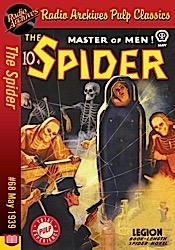

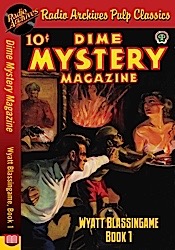
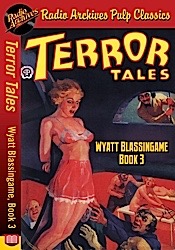
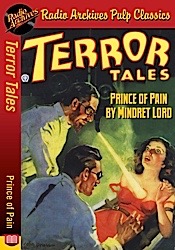

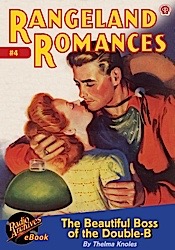
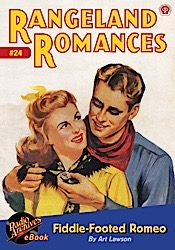










 Featured Girasol Replica: Weird Tales #107 November 1932 [Pulp Replica]
Featured Girasol Replica: Weird Tales #107 November 1932 [Pulp Replica]





.JPG)




.jpg)

dbl.jpg)
